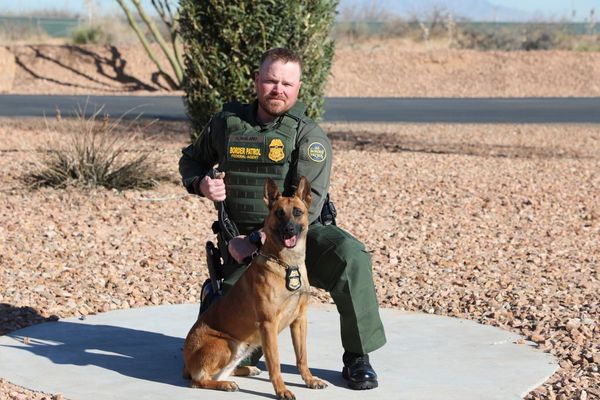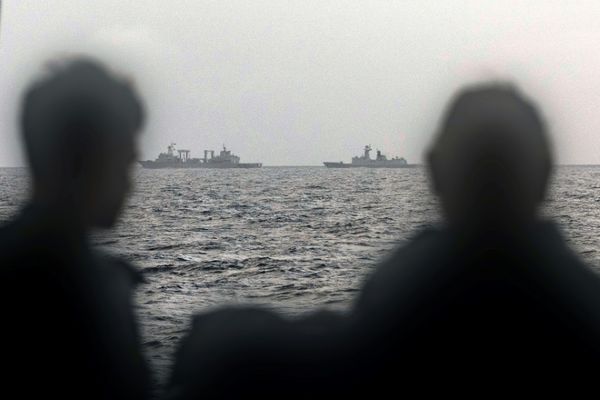
The unprecedented Russian military encirclement of Ukraine has not only brought closer the prospect of a devastating war in that country, it has also raised the risks of triggering an unintended wider conflict.
The US and Nato have been adamant that their troops will not enter Ukraine no matter what happens, and the Pentagon has pulled out the 160 national guard soldiers who were acting as military advisers.
Even during the cold war, Washington and Russia made sure their forces did not clash, and Joe Biden has made clear he would seek to keep it that way.
“That’s a world war when Americans and Russia start shooting at one another,” Biden said.
However, the massing of Russian troops in Belarus and the deployment of a substantial Russian naval force in the Black Sea, matched on a smaller scale by Nato land, sea and air reinforcements on the alliance’s eastern flank, means there is far more military hardware in close proximity than is normal. And with proximity comes the increased danger of accidents and unintended consequences.
“The risk of something going down like a mid-air collision, or a trigger-happy Russian or American, can really escalate things quickly,” said Danny Sjursen, a former army major and director of the Eisenhower Media Network.
“You’re setting yourself up for accidents and miscalculation, and that’s when you can get out of control real quick, because there are domestic considerations both in Russia and in the United States. An American pilot dies – now what? I’m not saying that necessarily means we go to cataclysmic nuclear war but it escalates things.”
The US national security adviser, Jake Sullivan, told CBS News on Sunday that the US had sought to be transparent about its troop deployments in eastern Europe in order “to avoid mistake, miscalculation or escalation and also to send a very clear message to Russia we will defend every inch of Nato territory”.
There is a long history of close encounters over the Baltic and Black Seas. Earlier this month US jet fighters scrambled to intercept Russian warplanes operating close to Nato airspace while British and Norwegian planes took off to monitor Russian aircraft flying into the North Sea.
While Russia has shut off large parts of the Black Sea to conduct its manoeuvres, Nato navies have stayed out of the immediate vicinity for now, while building up their presence in the Mediterranean. If they do decide to go through the Bosphorus in a show of strength, or to safeguard commercial shipping, the risk will rise again.
Elisabeth Braw, a senior fellow at the American Enterprise Institute, said the danger was further heightened by Russia’s suspected use of “GPS spoofing”, interference with the navigational equipment of other vessels.
On several occasions recently, civilian ships traveling in the Black Sea have encountered mysterious GPS troubles that showed the vessels being in a different part of the Black Sea or even on land. It was widely though the incidents were caused by Russia testing its technology.
“It raises the risk for naval vessels that are in the Black Sea, which we should remember is not that big, and it’s crowded,” Braw said. “There’s enormous shipping activity in the Black Sea, and so all those crews face the risk of having no GPS.”
The transfer of combat troops from Russia’s far east to Belarus has not only significantly increased the imminent threat to Ukraine, but also made eastern European Nato members increasingly nervous.
“The closest training ranges in Belarus are 150 to 200km from Vilnius or Warsaw,” said Kristjan Mäe, the head of the Nato and EU department at Estonia’s ministry of defence. “This is a Russian force posture that hasn’t been there previously.”
A refugee crisis at the Polish-Belarus border last year led to a close encounter between the troops facing each other, with Warsaw complaining that Belarus forces opened fire in the direction of their soldiers.
“We have to remember that the people who are actually out on the frontline are very young men and women and they face enormous responsibility,” Braw said. “Yes there is a chain of command but if there is some sort of provocation or aggression, intentional or unintentional, that is directed against them, then they have to respond.”
The close encounters so far have occurred in peacetime. In the event of war, nerves will be far more on edge, communications could be hampered or flooded with disinformation.
“We cannot be entirely confident that in the lead-up to or during a conflict that Nato and Russia will be able to communicate, especially as current civil and military communication systems between them are not as robust or technically resilient as they should be,” Sahil Shah, a policy fellow at the European Leadership Network, said.
“The world’s two largest nuclear-armed states have returned to the brink of conflict exactly 60 years after the Cuban missile crisis. If diplomacy is not pursued to the fullest extent, the risks of miscalculation and miscommunication could potentially pull in wider Europe into a devastating war. Without dialogue on how to manage de-escalation, it will be as if our leaders are running into a monsoon with newspapers over their heads.”







